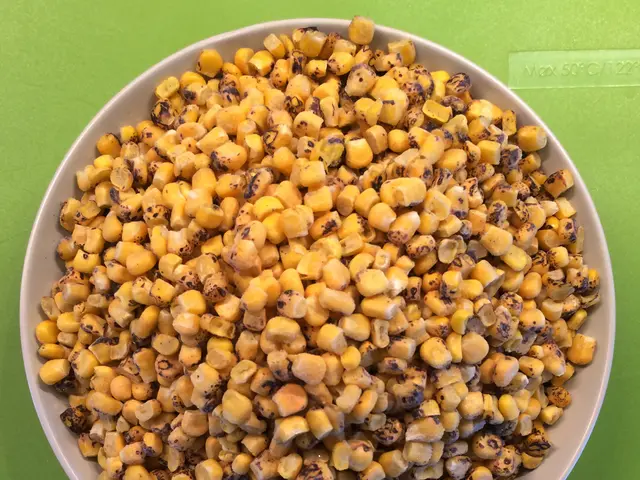Grabbing Diabetic-Friendly Treats? Opt for These Nutritious Snacks Instead
Managing Type 2 Diabetes Requires Balanced Snack Choices
For those with Type 2 diabetes, choosing the right snacks can significantly aid in regulating blood sugar levels. Emma Rueth, a registered dietitian and diabetes educator, recommends optimal snack selections that consist of fruits, vegetables, whole grains, protein, and healthy fats, while minimizing refined sugars and carbohydrates.
Optimal Snack Options
Incorporating fruits and vegetables, preferably in tandem with protein sources, presents an ideal snack choice. The combined nutrients in these foods help maintain a stable blood sugar level, ensuring satisfying and prolonged energy. Examples include apples with nut butter or cheese, raspberries with Greek yogurt, and baby carrots with hummus.
Whole grains, rich in nutrients like fiber and carbohydrates, are another smart snack selection. Opt for balanced whole grain snacks that include options like whole-grain crackers with cheese, whole-grain toast with nut butter, or steel-cut oatmeal with a hard-boiled egg on the side.
Protein serves an essential role in sustaining feelings of fullness, thereby controlling blood sugar levels. Options include a meat and cheese roll-up, string cheese, hard-boiled eggs, canned tuna with whole grain crackers, cottage cheese, or Greek yogurt, and roasted chickpeas.
Limitations to Be Aware Of
When considering snacks, it is crucial to be mindful of the following factors:
- Limit liquid carbohydrates such as soda, juice, and sweetened caffeinated beverages, as they can quickly spike blood sugar levels without offering lasting satisfaction.
- High-sodium foods, particularly common among people with Type 2 diabetes who often experience high blood pressure, should be minimized. Stick to the American Heart Association recommendation of fewer than 2,300 milligrams of sodium a day.
- Refined carbs, found in foods like white bread, white rice, and white pasta, should be avoided due to their lack of fiber and other nutrients, promoting quick digestion and resulting in a rapid blood sugar surge.
- Minimize added sugar, as it offers empty calories that do little to curb hunger and contribute to poor blood sugar control.
Building a Healthy Snack
To ensure a well-balanced snack, follow these tips:
- Prioritize reading nutritional labels to evaluate the serving size, calorie content, fiber, and protein distribution. Aim to make choices based on the total carbohydrates rather than focusing solely on sugar or added sugar.
- Always pair carbohydrates with protein or fat in your snack selections, such as combining an apple with peanut butter or cheese, to slow down digestion and ensure sustainable blood sugar levels and a feeling of fullness.
- Be mindful of calorie intake, aiming for snacks under 200 calories.
- Consider your snacking schedule, striving to go no more than five hours without eating during the day to maintain stable blood sugar levels and prevent overeating at mealtime.
By making informed choices and following these tips, you can develop a snacking routine that effectively supports Type 2 diabetes management.
- In the context of Type 2 diabetes management, focusing on snacks that consist of fruits, vegetables, whole grains, protein, and healthy fats is recommended, while minimizing refined sugars and carbohydrates.
- Whole grains, nutrient-rich in fiber and carbohydrates, are smart snack selections, such as whole-grain crackers with cheese, whole-grain toast with nut butter, or steel-cut oatmeal with a hard-boiled egg on the side.
- Protein sources, essential for maintaining feelings of fullness and controlling blood sugar levels, include options like meat and cheese roll-ups, string cheese, hard-boiled eggs, canned tuna with whole grain crackers, cottage cheese, Greek yogurt, or roasted chickpeas.
- To build a healthy snack, always pair carbohydrates with protein or fat in your snack selections, like an apple with peanut butter or cheese, to slow down digestion and ensure sustainable blood sugar levels and a feeling of fullness.
- In addition to snack choices, it's crucial to minimize added sugar, limit liquid carbohydrates, high-sodium foods, and refined carbs to support a healthy-diets and effective weight-management, thereby improving Type 2 diabetes management within the broader health and wellness realm, inclusive of fitness and exercise, education, and workplace-wellness.








